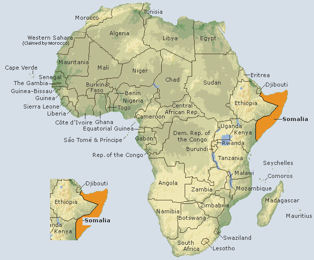Somali Games
G. Marin
Journal of The Royal Anthropological Institute, London, No. 61, 1931, Pages 499-511

It appeared from a reading of this paper, that the author was a British anthropologist or ethnologist working in Somolia in the 1920s. An attempt to find biographical information about the author had not been successful, and we indicated that if a viewer could provide this information, it would be included in an update to this page.
On November 21, 2008, Thierry Depaulis of Paris, France, noted editor of the International Journal for the Study of Board Games, emailed the Museum with biographical information about Marin. The following is a slightly edited version of Mr. Depaulis' emailed text - information which the Museum has used to create this updated page.
Mr. Depaulis wrote: "Eugčne Gaspard Marin (1883-1969) was neither a Brit, nor an anthropologist. He was a Belgian anarchist!"
Born into a well-to-do Walloon Belgian family in Boitsfort, Belguim in 1883, he became involved with the Communist-Libertarian colony in Stockel-Bois near Brussels, Belgium, founded in 1905 by Emile Chapelier; the colony was dissolved in 1908. Marin then went to England and settled in Whiteway, the Tolstoyan colony near Gloucester, where he resided until his death in 1969.
In 1928 Marin undertook to travel around the world, partly by bicycle. His trip was to last 10 years through Europe, East Africa, India (where he met Gandhi), Sumatra, and China. He often stopped and mingled with local people in order to learn how they lived. He accumulated a mass of ethnological and sociological information, recorded in many hand-written notebooks that are unfortunately still unpublished. Marin's papers are dispersed between the Imperial College Science Museum Library in London, and the International Institute of Social History (IISH), in Amsterdam. He published two articles on games: "An ancestor of the game of Ludo", Man, Vol. XLII, 1942, no. 64, pp. 114-115 + 116-117, and "Somali games", which is included on this Website.
All of the line drawn graphics in the "Somali games" article included on this Website appeared in the original paper, apparently drawn by the author. The map above was not in the original paper.
In producing this paper as an HTML document, some problems occurred in copying the phonetic symbols and transcription marks included in the original paper; an attempt has been made to include these as graphic characters when necessary, rather than as text. Click on a contents topic below to read about these games and to view diagrams and instructions for playing the games.
CONTENTS
- Wrestling (legdan)
- Fighting (la·mo·tan)
- Fighting (dabartan)
- Throwing Projectiles (daςartan)
- Foot-racing (tartan)
- Spear-throwing for distance (riddan)
- Targeting (nifa·btan)
- Hockey (ħe·go)
- Quoits (lu·f)
- Tipcat (ςu·d)
- Catching Stones Game (dzag)
- Game of 5 Stones (kautan)
- Rhyming Clapping Game (dzawwo)
- Prisoner's Base (la·)
Games of Calculation
Games of Chance and Calculation
Last update January 7, 2010
